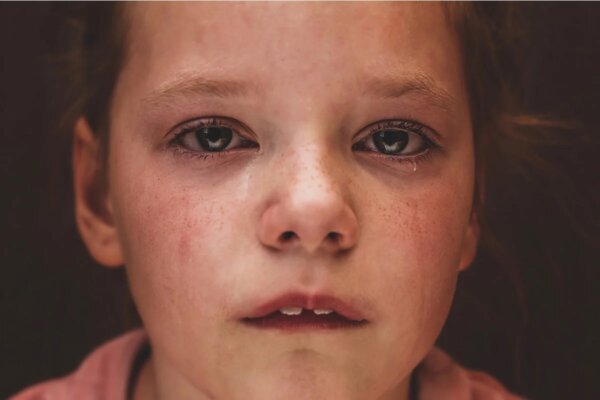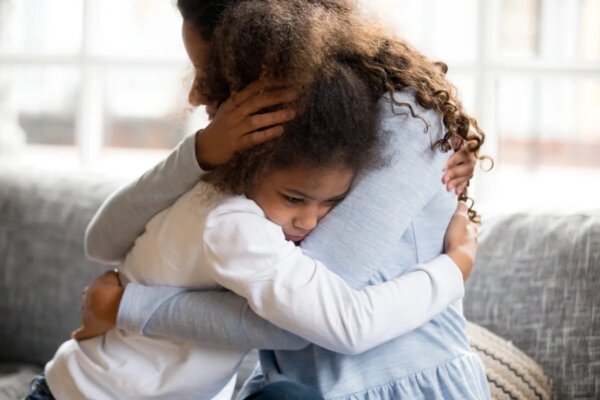How to Help a Child Recover from Trauma

How do you help a child recover from trauma? Before answering this question, let’s look at the definition of trauma. According to McCann and Pearlman (1990), “An experience is considered a trauma if it’s sudden, unexpected, or non-normative, exceeds the individual’s perceived ability to meet its demands, and disrupts the individual’s frame of reference and other central psychological needs and related schemas“.
Therefore, trauma can take various forms in both childhood and adulthood. In adulthood, trauma tends to be related to situations of extreme violence such as attacks or death, among others. However, in childhood, traumas are more often related to cases of bullying, abuse, death or estrangement of a loved one, fear of rejection, and humiliation, etc.
This article addresses trauma generically. Nevertheless, you should keep in mind that trauma can vary from case to case.
Here are some ideas to help a child recover from trauma. It goes without saying that considering professional help should always be the first step. However, each case is different and should be considered individually. Most importantly, make sure you’re with the child every step of the way.

Ask for professional help
The first step in helping a child overcome trauma is to seek professional help. A child psychologist can help the child focus on the problem. More importantly, they can help them integrate the traumatic experience they had.
Indeed, rather than overcoming the traumatic experience, the child learns to integrate it as part of their lived experience. However, this can only be achieved with the help of a professional who specializes in this particular field. This is very important, as mental health is a serious issue.
Depending on the trauma itself and the effect it had on the child, you might want to assess whether you actually do need to consult a professional. For example, if the trauma was mild and hasn’t had any effect on the child’s life or their well-being, help might not be necessary. On the other hand, if their life and well-being have been impacted, you should seek professional assistance.
Help the child express themselves
The first step in helping a child to overcome trauma is to encourage them to express themselves. This doesn’t mean that they should have to talk about it whenever and however you want them to. In fact, you need to adopt certain strategies in order to help the child express their feelings. Furthermore, you must create a comfortable space for them to make them feel safe and calm.
A good tool is drawing, as children are capable of expressing their inner worlds through drawing in a way that’s not too intrusive for them. This allows them to express, not just how they feel, but also what the trauma was like for them. Indeed, remembering the trauma can often help. This can always be done with professional supervision if necessary.
Expressing what they’ve experienced will help you understand how they feel and how the trauma impacted their life. They can express this via words, drawings, films, books, or gestures, whatever they feel most comfortable with. In addition, even though it might be rather limited, any information they manage to share with you can prove to be extremely valuable.
Maintaining a routine will help a child recover from trauma
Routines help children feel safe. Regarding trauma, they can help them regain those feelings of living in a controlled environment where they’re protected. Such feelings also help them express themselves.
Consequently, family schedules and rules can be beneficial in helping the child to return to the present moment while, at the same time, processing the traumatic event. You can ask for professional help if you need it.
Practice breathing with them
Breathing exercises help reduce anxiety and other symptoms of hyperactivity in the body. In fact, after a traumatic experience, it’s common for the body and mind to suffer these types of symptoms. For example, the child might be on constant alert, “waiting” for the next trauma, or they might feel irritable, worried, and anxious.
In these cases, conscious breathing can prove helpful. Furthermore, if you do it together, the child won’t feel alone. However, it also might be something they can eventually practice on their own.
Use reinforcements
When it comes to helping a child overcome trauma, it’s important for them to feel more loved and valued than ever before. This is because it’s normal for a traumatic situation to affect self-esteem. For this reason, it’s important that you listen to the child, spend time with them, and, above all, make them feel loved and more valued than ever.
You should take advantage of the times they do something right to reinforce and reward their behaviors. It doesn’t have to be with material things. Reinforcement is an act of love. It can be a hug, a kiss, a “we’re going to spend the afternoon together”, etc. On the other hand, reinforcement can also involve valuing their skills, abilities, and efforts. This way, they won’t always have to do something “right” to know that they’re valued and that everything is okay.

A final note on how to help a child recover from trauma
It’s always important for people to talk about the trauma and how it made them feel. This allows them to rework the experience and integrate it as a part of their life. However, this isn’t easy for children. If you notice that your child’s life and well-being have been affected, you need to ask for professional help.
In addition to the above, implementing some of the guidelines we shared can help the child process the traumatic experience and gradually return to normal. Furthermore, they’ll regain control of their life and improve their well-being. They need to be able to express their doubts and fears and realize that they’re not alone. This will allow them to feel protected and regain their sense of safety.
All cited sources were thoroughly reviewed by our team to ensure their quality, reliability, currency, and validity. The bibliography of this article was considered reliable and of academic or scientific accuracy.
- Caballo, V. y Simón, M.A. (2002). Manual de Psicopatología Clínica Infantil y del Adolescente. Trastornos generales. Pirámide: Madrid.
- Pérez, M., Fernández, J. y Fernández, I. (2006). Guía de tratamientos psicológicos eficaces III. Infancia y adolescencia. Pirámide: Madrid.
This text is provided for informational purposes only and does not replace consultation with a professional. If in doubt, consult your specialist.








